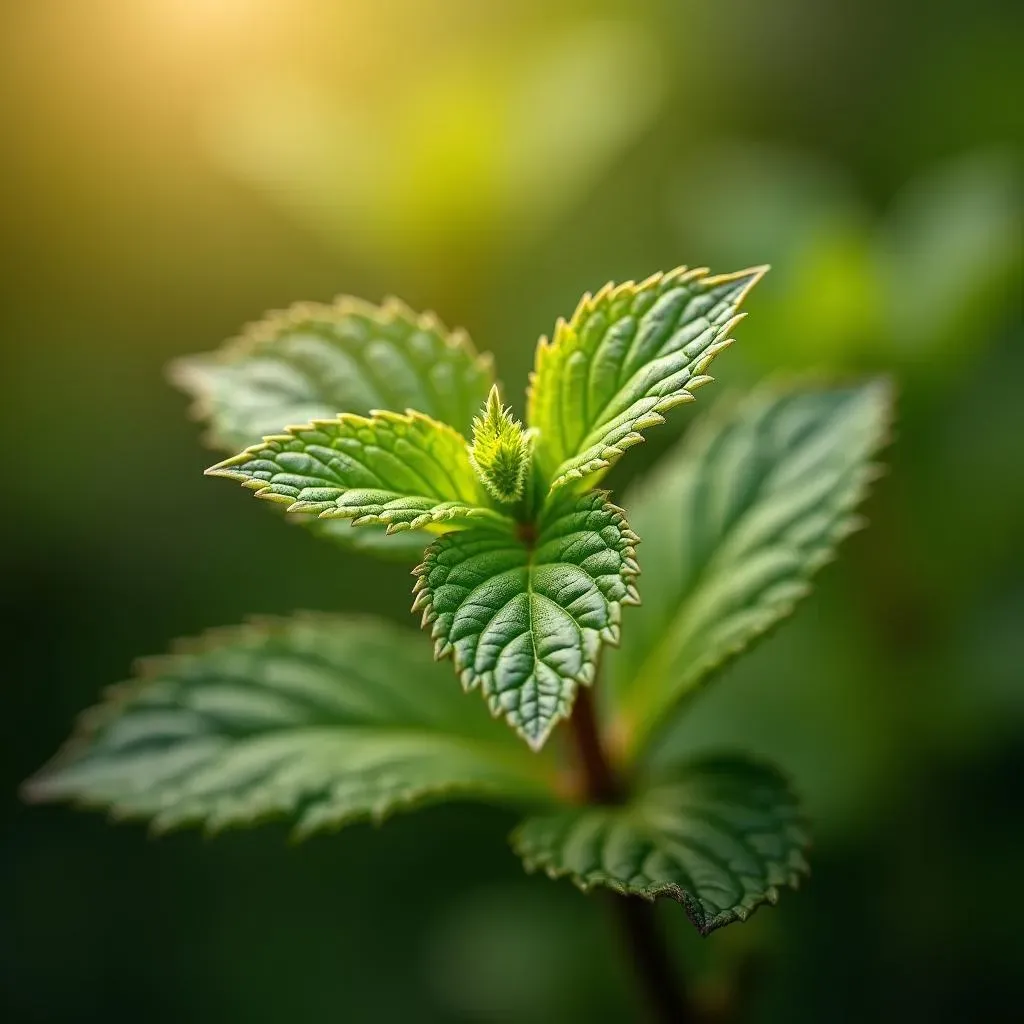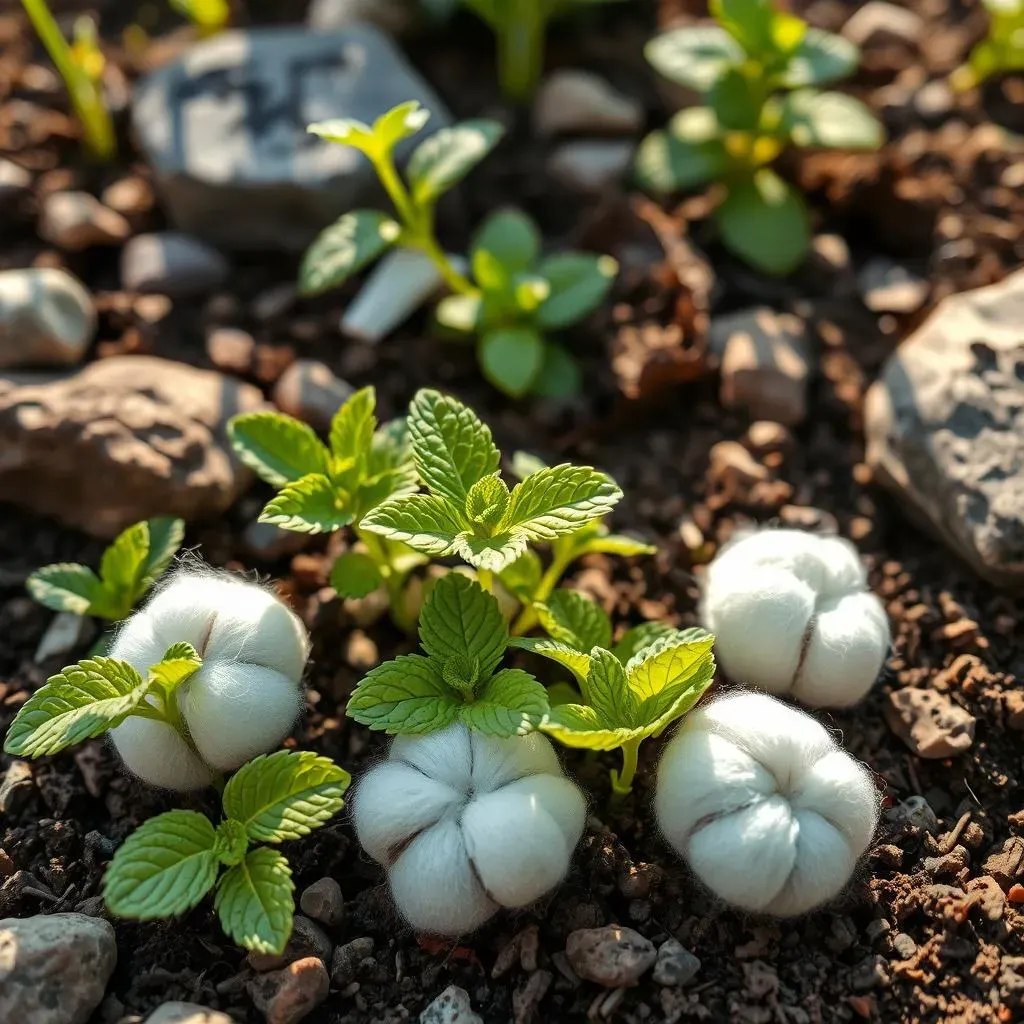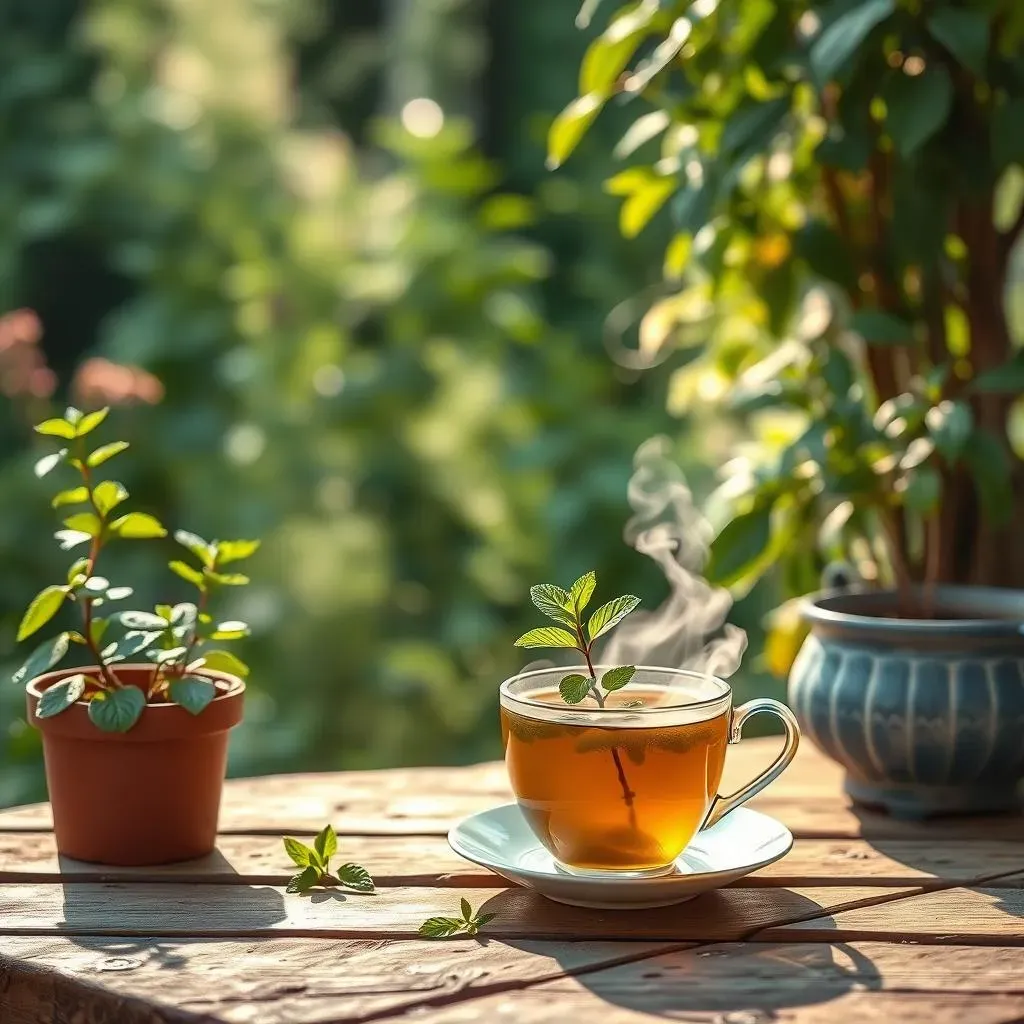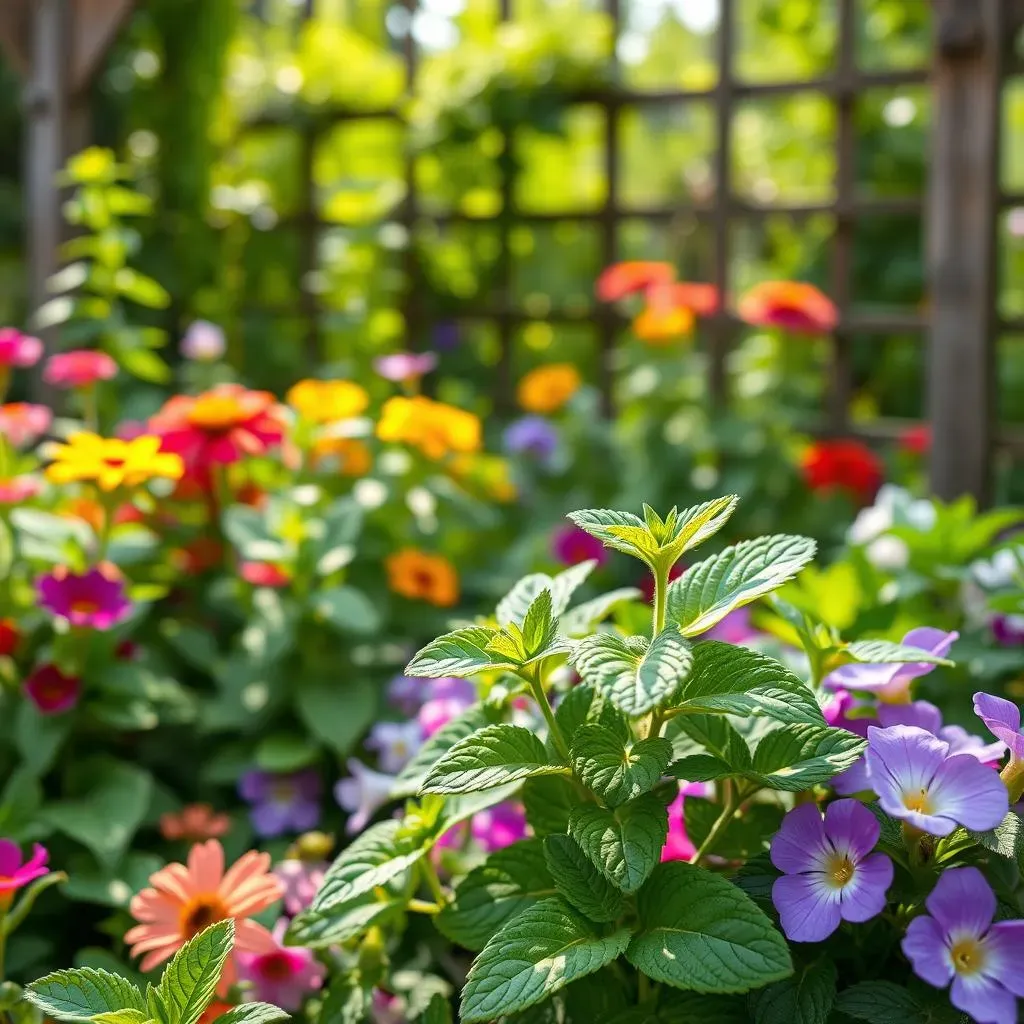Table of Contents
Are you tired of battling pesky garden pests with harsh chemicals? This article explores a natural and surprisingly effective solution: spearmint tea plant garden pest control. We'll uncover the science behind spearmint's pest-repelling properties, exploring how its potent aroma and essential oils can deter a range of common garden invaders. From aphids and ants to even larger critters, we'll examine the effectiveness of various spearmint tea applications in protecting your precious plants. This isn't just about theory; we'll dive into practical, step-by-step instructions on how to prepare and use spearmint tea for pest control, offering tips and tricks based on real-world experiences. Get ready to discover whether spearmint tea can truly become your secret weapon against unwanted garden guests. We'll also discuss the limitations of this natural method, ensuring you have a realistic understanding of its capabilities. Prepare to learn how to harness the power of this readily available herb for a healthier, more vibrant garden, free from the harmful effects of chemical pesticides.
Spearmint Tea Plant: A Natural Pest Repellent?
Spearmint Tea Plant: A Natural Pest Repellent?
The Aromatic Defense
So, you're diving into the world of spearmint tea plant garden pest control? Fantastic! The core idea rests on spearmint's potent aroma. Those lovely, minty leaves aren't just delicious in tea; they contain essential oils – menthol being a key player – that many insects find incredibly off-putting. Think of it as nature's built-in bug spray! This isn't some new-age, hippie-dippie notion either; many cultures have long used mint for its insect-repelling qualities. It's a natural, readily available alternative to harsh chemicals.
It's not just about the smell though. The essential oils in spearmint can actually interfere with the insects' sensory systems, making it harder for them to find your plants. It's like throwing a smelly, confusing party that bugs just can't stand! This makes spearmint a great option for those who want to keep their gardens healthy and chemical-free.
Pest | Spearmint's Effect |
|---|---|
Aphids | Repels with strong aroma |
Ants | Deters with scent; may disrupt trails |
Flies | Can be a deterrent, but effect varies |
Beyond the Aroma: How It Works
While the strong smell is the star of the show, the mechanism behind spearmint's pest-repelling powers is more nuanced. The essential oils don't just mask the scent of your plants; they can physically interfere with the insects' ability to feed, lay eggs, or even navigate. Some research suggests that the oils can disrupt their nervous systems, leading to disorientation and deterring them from settling on your plants. It's not a guaranteed knockout punch for every insect, but it's a significant hurdle for many common garden pests.
Think of it like this: you wouldn't want to eat something that tasted incredibly bitter and made you feel nauseous, right? It's the same principle for many insects. Spearmint's oils make your plants less appealing, less accessible, and frankly, a less desirable place to hang out. This makes it a very effective, all-natural form of pest control.
- Disrupts insect sensory systems
- Interferes with feeding and egg-laying
- Creates a less desirable environment
Choosing Your Spearmint
Not all spearmint is created equal when it comes to pest control. While the essential oils are present in most spearmint varieties, the concentration can vary. Opt for plants known for their strong, vibrant aroma. The more potent the scent, the more effective it will likely be as a pest deterrent. Consider growing your own spearmint – not only will you have a ready supply of leaves for your tea, but you'll also benefit from the plants' natural pest-repelling qualities.
Another important factor is the health of your spearmint plants. Healthy, thriving plants produce more essential oils, leading to a stronger pest-repelling effect. Make sure to provide your spearmint with adequate sunlight, water, and nutrients to ensure it's at its pest-fighting best. Remember, a healthy plant is a happy plant, and a happy plant is a pest-resistant plant!
Using Spearmint Tea for Garden Pest Control
Using Spearmint Tea for Garden Pest Control
Okay, so we've established that spearmint's amazing aroma packs a pest-repelling punch. But how do we actually *use* this knowledge to protect our plants? Enter: spearmint tea! Brewing a strong tea from fresh or dried spearmint leaves creates a potent, easily-applied pest deterrent. It's a simple, all-natural method that's far less harsh than chemical pesticides. You can use it as a foliar spray, directly applying it to your plants' leaves, or as a soil drench, working it into the soil around your plant's roots to deter soil-dwelling pests. Remember, consistency is key! Regular applications will be more effective than infrequent ones.
- Foliar Spray: Directly apply to leaves.
- Soil Drench: Water the soil around the plant's base.
- Direct Application: Use a cotton ball to dab affected leaves.
The beauty of using spearmint tea is its versatility. It’s not just for spraying. You can also soak cotton balls in strong, cooled spearmint tea and dab them directly onto affected leaves. This is particularly useful for targeting specific pests or areas with heavy infestation. Remember to always test a small area first to ensure the tea doesn't harm your plants. Different plants have different sensitivities, so a little caution is always a good idea. Start with a weaker concentration and increase it gradually if needed. Never use boiling tea directly on plants; allow it to cool completely.
Effective Spearmint Tea Pest Control Methods
Effective Spearmint Tea Pest Control Methods
Crafting Your Spearmint Tea Brew
Let's get practical! To make an effective spearmint tea for pest control, you'll need fresh or dried spearmint leaves (the fresher, the better!), a pot, and water. For a strong brew, use about 1 cup of packed leaves per quart of water. Bring the water to a boil, then add the leaves. Simmer for about 15-20 minutes, allowing the essential oils to infuse into the water. Once cooled completely, strain the tea to remove the leaves, leaving you with a potent, pest-repelling liquid.
Don't be afraid to experiment with the strength of your brew. A stronger tea will likely be more effective, but always test a small area first to make sure it doesn't harm your plants. Remember, we're aiming for pest control, not plant eradication! You can also adjust the brewing time to control the strength of the tea. A longer simmer time will extract more essential oils, resulting in a more potent brew.
Ingredient | Amount |
|---|---|
Spearmint Leaves (fresh or dried) | 1 cup (packed) |
Water | 1 quart |
Application Techniques for Maximum Impact
Now that you have your spearmint tea, it's time to apply it strategically. For foliar sprays, use a spray bottle to apply the tea directly to the leaves of your plants, ensuring both the top and undersides are coated. Focus on areas where you see pest activity. For soil drenches, gently pour the cooled tea around the base of your plants, allowing it to soak into the soil. This method is particularly useful for combating soil-dwelling pests like ants.
Remember, consistency is crucial! Regular applications – ideally every few days or as needed – are far more effective than infrequent treatments. Consider combining different methods. For example, use a foliar spray for above-ground pests and a soil drench for those lurking below the surface. Always allow the tea to cool completely before applying it to your plants to avoid damaging them.
- Spray directly onto leaves.
- Pour around the base of plants.
- Combine with other methods for better results.
Troubleshooting and Refining Your Approach
Even with the best intentions, sometimes things don't go exactly as planned. If you're not seeing the results you expected, don't despair! There are several things you can try. First, ensure you're using a strong enough brew. If your tea is too weak, it may not be potent enough to deter pests effectively. Consider increasing the amount of spearmint leaves or extending the simmering time. Also, ensure you're applying the tea frequently enough. Regular applications are key to maintaining a pest-free environment.
Another important factor to consider is the type of pest you're dealing with. Spearmint tea is effective against a wide range of pests, but some may be more resistant than others. If you're struggling with particularly stubborn pests, consider combining your spearmint tea treatment with other natural pest control methods, such as introducing beneficial insects or using diatomaceous earth. Remember, persistence and adaptation are key to success in any gardening endeavor!
Spearmint Tea Plant Pest Control: Success Stories and Limitations
Spearmint Tea Plant Pest Control: Success Stories and Limitations
So, you're curious about the real-world effectiveness of spearmint tea for pest control? Let's be honest, while the anecdotal evidence is plentiful – overflowing with tales of triumphant gardeners swatting away aphids with nothing but a cup of spearmint – the scientific community hasn't exactly showered this method with rigorous, peer-reviewed studies. Many gardeners swear by it, reporting significant reductions in various pests, especially aphids and ants. They'll tell you stories of lush, healthy plants thriving despite the presence of pests nearby. These success stories are compelling, painting a picture of a natural, effective solution, and rightfully so. However, it's crucial to temper this enthusiasm with a dose of reality.
- Successful reports often focus on specific pests (aphids, ants).
- Effectiveness varies based on pest species, plant type, and application.
- Consistency and strength of tea are key factors in success.
The truth is, spearmint tea's effectiveness isn't universally guaranteed. While the essential oils certainly have pest-repelling properties, the potency varies depending on factors like the plant's health, the concentration of the tea, and the specific pest in question. Some pests are far more resilient than others, and may not be significantly affected by spearmint tea alone. It's not a magic bullet, and expecting a complete eradication of all pests is unrealistic. Think of it more as a helpful tool in your overall pest management strategy, rather than a standalone solution. It works best as part of an integrated approach, combining it with other methods like companion planting or hand-picking pests.
Factor | Impact on Effectiveness |
|---|---|
Strength of Tea | Stronger brews generally work better. |
Frequency of Application | Regular applications are more effective. |
Pest Type | Effectiveness varies greatly depending on the pest. |
